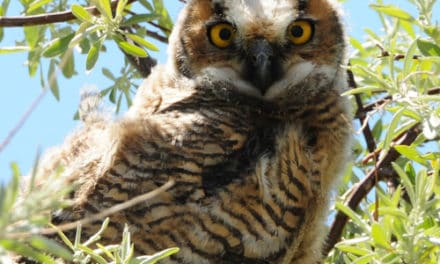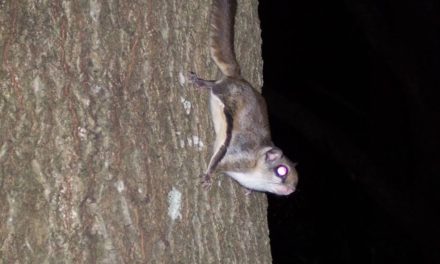By Melissa Wynn
[media-credit id=1 align=”alignright” width=”500″] [/media-credit]
[/media-credit]
The Sierra Nevada Red Fox is so named because it lives only in the higher elevations of the Sierra Nevada Mountains. We have our own fox right here in on the mountain range. How cool is that? These cunning canines of the conifers stay with us in the mountains year ’round although they do make seasonal elevation changes. Summertime may find them at over 6,000 feet elevation, hunting above the timberline while autumn may find them nibbling berries at 4,500 feet or slightly lower.
Although it is called a “red” fox, this species has three phases of color. As the name indicates, the red color phase consists of red fur on the head and back with a white lower jaw, throat and underbelly. The black and silver phase does away with the white, having a black base coat with silver tipped guard hairs. The cross phase is as it suggests, a mixture of the other two phases. All three phases maintain the white tip on the always bushy tail and black legs. It is a spectacular golden-eyed creature, regardless of the color of its fur..
When it comes to food, the Sierra Nevada Red Fox isn’t picky. Scavenging for berries and carrion (the decaying flesh of dead animals) works just as well for this sly predator as hunting does. Small birds, chipmunks, ground squirrels and pocket gophers are some of their preferred prey. Insects and eggs are also common on the diverse fox menu. If it is edible, these frisky forest drifters are all over it.
Sierra Nevada Red Fox babies are called kits. They are fuzzy and fat and look similar to domestic puppies. Litters of 2 or 3 are born in early April and by mid-June are romping around outside the den. Both parents bring solid food throughout the summer and fall. The family then disperses to become solitary hunters until the next mating cycle begins in December.
Listed as threatened under the California Endangered Species Act in 1980, the Sierra Nevada Red Fox continues to be protected in hopes that the small population will thrive. The fur trading of yesteryear nearly drove them to extinction. Few are lucky enough to see one in the wild although occasional sightings are reported. Should you come upon a den or spot one of these rare forest friends, please do not disturb them. Report the sighting to the nearest forest service agency. I consider it quite a privilege to call the rare and beautiful Sierra Nevada Red Fox my neighbor, yet another awesome benefit of Mountain Valley Living.
Facts courtesy CA Dept. Of Fish and Game











